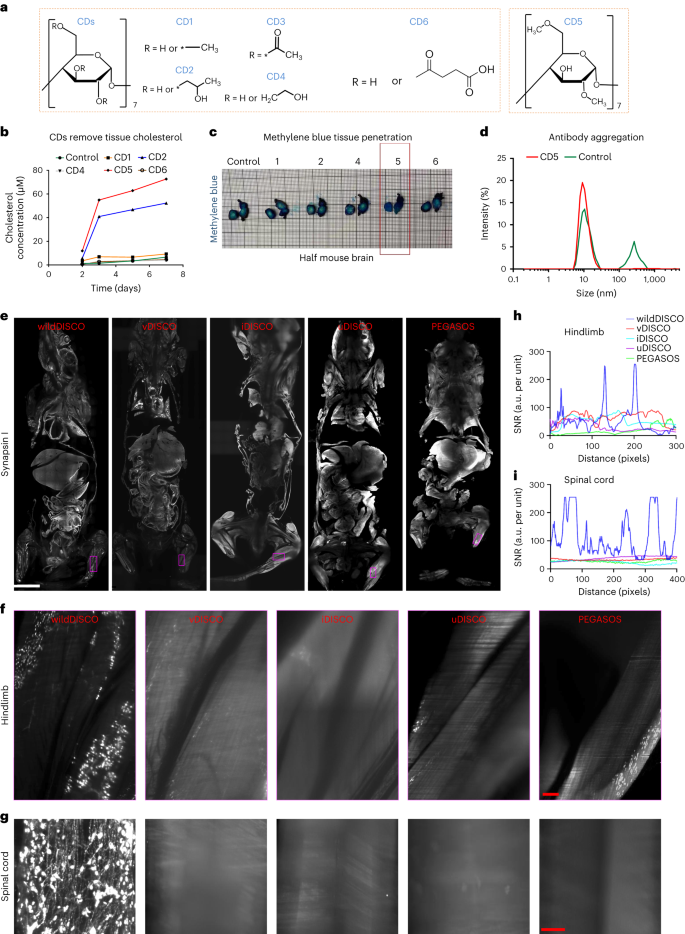2023-07-10 ミュンヘン大学(LMU)
◆Eckhard Wolfグループは、この変異を持つ豚DMDモデルを開発し、人間の疾患の生化学的、臨床的、病理学的な特徴を模倣するが、加速されたモードでそれらを発展させる。DMDエクソン52が欠落しているジストロフィック豚モデルで広範な修正モデルを生成した。分子的、病理学的、臨床的な変化はほとんど救済されたため、エクソンスキップ戦略の最適化が臨床的に関連する目標であることが支持されている。
<関連情報>
- https://www.lmu.de/en/newsroom/news-overview/news/animal-mode-prediction-of-therapeutic-potential-in-duchenne-muscular-dystrophy.html
- https://www.pnas.org/doi/10.1073/pnas.2301250120
DMDエクソン51の全身的欠失により、DMDエクソン52欠損ブタモデルにおいて臨床的に重症のデュシェンヌ型筋ジストロフィーが救済される Systemic deletion of DMD exon 51 rescues clinically severe Duchenne muscular dystrophy in a pig model lacking DMD exon 52
Michael Stirm . Bachuki Shashikadze . Andreas Blutke, Elisabeth Kemter . Andreas Lange, Jan B. Stöckl . Florian Jaudas . Laeticia Laane . Mayuko Kurome, Barbara Keßler . Valeri Zakhartchenko . Andrea Bähr, Nikolai Klymiuk, Hiroshi Nagashima . Maggie C. Walter . Wolfgang Wurst, Christian Kupatt . Thomas Fröhlich . and Eckhard Wolf
Proceedings of the National Academy of Sciences Published:July 10, 2023
DOI:https://doi.org/10.1073/pnas.2301250120

Significance
Exon skipping is a promising therapeutic concept for Duchenne muscular dystrophy (DMD) caused by frameshift mutations of the DMD gene. However, current delivery strategies for antisense oligonucleotides or gene editing tools limit exon skipping to a proportion of (cardio)myocytes; the full therapeutic potential remains thus unclear. Here, we generated a model of ubiquitous correction of DMD by systemic deletion of exon 51 in a dystrophic pig model lacking DMD exon 52. Molecular, pathological, and clinical alterations were largely rescued, supporting the optimization of exon skipping strategies as a clinically relevant goal. Due to the high susceptibility of pigs to dystrophic muscle lesions, DMDΔ51-52 pigs resembling a form of Becker muscular dystrophy (BMD) will uncover long-term outcomes within a reasonable time frame.
Abstract
Duchenne muscular dystrophy (DMD) is a fatal X-linked disease caused by mutations in the DMD gene, leading to complete absence of dystrophin and progressive degeneration of skeletal musculature and myocardium. In DMD patients and in a corresponding pig model with a deletion of DMD exon 52 (DMDΔ52), expression of an internally shortened dystrophin can be achieved by skipping of DMD exon 51 to reframe the transcript. To predict the best possible outcome of this strategy, we generated DMDΔ51-52 pigs, additionally representing a model for Becker muscular dystrophy (BMD). DMDΔ51-52 skeletal muscle and myocardium samples stained positive for dystrophin and did not show the characteristic dystrophic alterations observed in DMDΔ52 pigs. Western blot analysis confirmed the presence of dystrophin in the skeletal muscle and myocardium of DMDΔ51-52 pigs and its absence in DMDΔ52 pigs. The proteome profile of skeletal muscle, which showed a large number of abundance alterations in DMDΔ52 vs. wild-type (WT) samples, was normalized in DMDΔ51-52 samples. Cardiac function at age 3.5 mo was significantly reduced in DMDΔ52 pigs (mean left ventricular ejection fraction 58.8% vs. 70.3% in WT) but completely rescued in DMDΔ51-52 pigs (72.3%), in line with normalization of the myocardial proteome profile. Our findings indicate that ubiquitous deletion of DMD exon 51 in DMDΔ52 pigs largely rescues the rapidly progressing, severe muscular dystrophy and the reduced cardiac function of this model. Long-term follow-up studies of DMDΔ51-52 pigs will show if they develop symptoms of the milder BMD.


